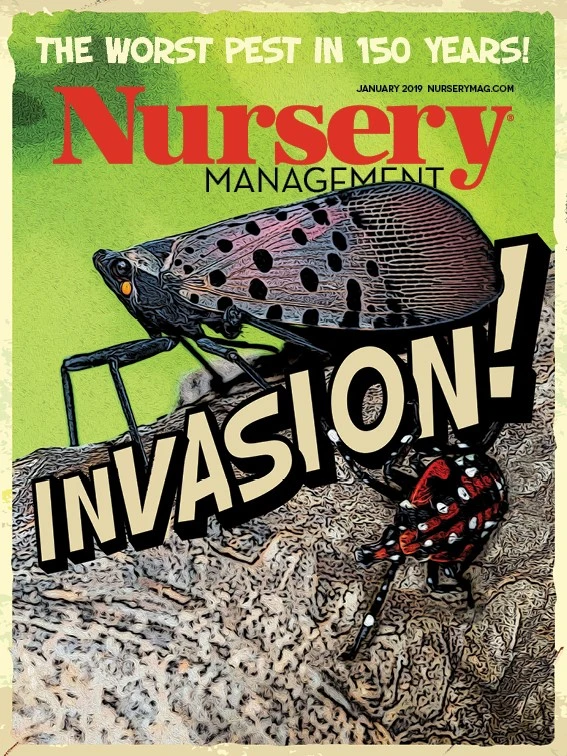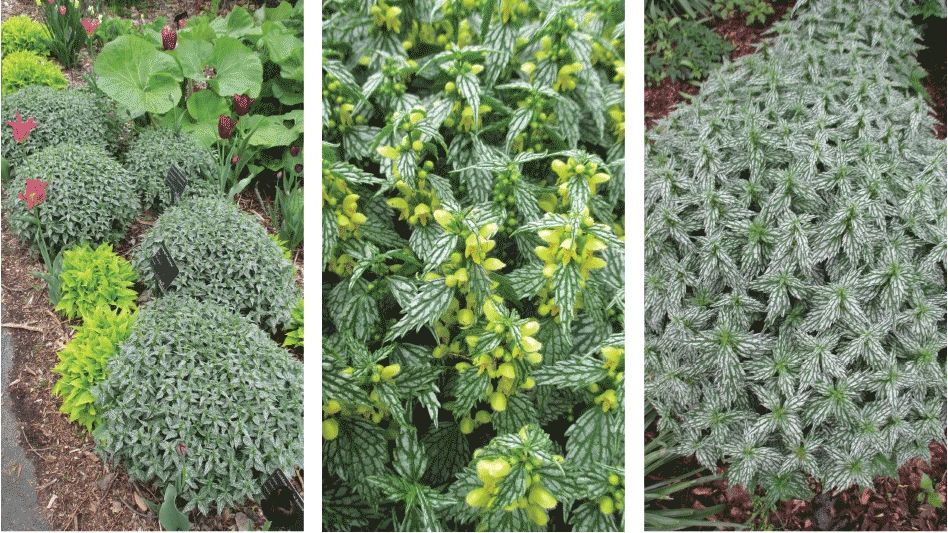

On a plant collecting trip in the 1980s, Joy Logee acquired an unusual plant with pancake-shaped leaves that she brought back to Logee’s Greenhouses in Danielson, Connecticut. It took years to identify the untagged specimen as Pilea peperomioides, a funky tropical variety commonly known as the Chinese money plant.
It eventually faded out of Logee’s collection — until recently, when Pilea suddenly surged back into popularity, taking every plant nerd’s social media feed by storm. Pictures began popping up on Pinterest and Instagram, as design icons abroad shared updates about their precious Pilea — fueling a frenzied demand that outpaced grower supply in the United States.
Pilea gained its reputation as “The Sharing Plant,” because you had to know someone to snag a hard-to-find start. People sold Pilea pups on eBay and Etsy for shocking prices, and desperate collectors ponied up hundreds without hesitation.
Meanwhile, plant retailers like The Sill struggled to find sufficient inventory as a new generation of consumers fell in love with tropical houseplants. Although The Sill’s founder and CEO, Eliza Blank, communicates with growers regularly to anticipate demand, she says she consistently sells out of varieties like Monstera deliciosa because growers can’t keep up with trends.
“Growers don’t have a huge appetite for risk, which makes our job more difficult, because we have to wait until enough retailers ask for the same plant,” Blank says. “It’s ultimately worse for the grower, too, because as soon as growers finally caught onto the popularity of Pilea, then they weren’t making as much money as they could have if they would have been willing to be the first to grow it.”
Growers are understandably loathe to take greenhouse space away from reliable crops to grow every “wacky new plant,” that Blank and other retailers request. As a result, the whole industry is feeling the pressure of a surging houseplant market, driven by trends that are redefining consumer’s relationships with plants.
Retro revival
Like Pilea, other houseplants from past decades are making a strong comeback.
When Austin Bryant browses Pinterest today, he sees houseplants that were hip in the ’70s; the same types of interior tropical foliage that his parents started growing when they opened Heart of Florida Greenhouses Inc. in 1977.
“It’s a minimalist retro look,” says Bryant, head of sales at his family’s greenhouse in Zolfo Springs, Florida, “like Ficus lyrata (fiddle-leaf fig) and Monstera deliciosa (split-leaf philodendron). Those are both oldie goldies, and those are the two hottest plants you could have right now. Is this generation searching to find a connection with their grandparents? I don’t know, but I can look on Pinterest and see plants I haven’t seen in years.”
Ty Strode, vice president and director of marketing at Agri-Starts in Apopka, Florida, agrees that throwback plants are back in vogue. He says tropical foliage is an obvious choice for a new generation of plant owners, because of its low-light, easy care requirements and exotic-looking leaves.
“We’re seeing more opportunity in these funky retro plants like Pilea and Monstera, but the core crops — like Spathiphyllum, Syngonium, Dieffenbachia and Aglaonema — continue to be in demand, too,” Strode says. “The mainstays will always be there, but now there’s a new opportunity to reinvent these re-emerging plants.”
So, what’s different about indoor foliage this time around?

The speed of social media
Classics are still in style, but the way consumers are choosing and using houseplants has changed drastically. The biggest difference with this generation, and their most influential trendsetter, is social media.
“It wasn’t until interior designers and lifestyle influencers gained traction on visual media channels, like Instagram and Pinterest, that plants became as popular as they are,” says Blank, who founded The Sill as an online plant retailer in 2012 and later opened two stores in New York City. “It used to be that the fiddle-leaf fig tree was only known to the audience reading Architectural Digest magazines, but now that Instagram exists, it democratizes access to high design.”
Now, photos of highly styled interiors accented with plants are making consumers green with “apartment envy,” says Mason Day, co-founder of GrowIt, a mobile app where people can share plant pictures and growing tips. As a result, young consumers see houseplants as must-have décor that makes a bold fashion statement. This nature-infused design aesthetic is pushing houseplant popularity to new heights.
“Houseplants are becoming more prevalent in all kinds of advertisements,” says Strode, who’s noticed clothing retailers adding plants to their merchandising displays for an earthy vibe. “That organic look is popular, so people are paying more attention to incorporating plants into their lives.”
The challenge is that modern plant preferences can shift at the speed of social media, and consumers might not appreciate how long it takes growers to produce those pretty plants they see online.
“It’s difficult for growers to keep up with these trends because we’re growing plants that are slow to produce, and this generation is flip-flopping faster than we can get liners in the soil,” Bryant says. “We put in orders six months prior to receiving anthurium plugs, for example, and then it takes 10 to 12 months to finish a 1-gallon pot. That trend could change before the plant we ordered becomes a finished product.”
Greening up the indoors
This generation’s obsession with social media propels the houseplant market in other ways.
“It’s no secret that we’re the indoor generation and we stare at our screens all day,” says Katie Dubow, creative director at Garden Media Group.
“Whether we’re doing it consciously or subconsciously,” Dubow says, “we’re putting more greenery in our homes because we’re spending more time inside.”
Last year, 30 percent of all households bought at least one houseplant, according to research from the National Gardening Association. Millennials were responsible for 31 percent of recent houseplant sales.
While design aesthetics definitely play a role, Dubow thinks our houseplant fascination stems from a deeper underlying focus on wellness and self-care.
“People understand that our surroundings where we work, live and play can affect our health and well-being,” Dubow says. “That’s one of the biggest trends causing people to turn toward houseplants, because they want to incorporate more wellness in their space.”
Earlier this year, the National Initiative for Consumer Horticulture (NICH) developed a series of infographics to promote the proven health and wellness benefits of houseplants. The #PlantsDoThat campaign illustrated how indoor plants can improve test scores in classrooms, lower blood pressure in hospitals and increase productivity in the workplace.
“We started the #PlantsDoThat campaign to show people what houseplants actually do in their everyday lives,” says Day, who is also the chair of the commercial council for NICH. “These benefits resonate with millennials, because they want something that does more than just look pretty.”
According to global research firm Mintel, 52 percent of U.S. consumers buy houseplants because of their air-purifying power
Bryant still sees plenty of opportunity for the green industry to leverage this type of messaging. “These benefits are brandable tools that nurseries should be using to drive the popularity of these plants,” he says. “All growers have access to this information through the NHF or NICH; it’s essentially free data to help tell the story of why we should have more plants around us.”

Tapping into growth
Houseplants are back, and the growth outlook for this market is hot.
“Exploding is the only word to describe it,” Day says.
Growers can respond to these opportunities one of two ways: “You’ve got growers that have always grown what they grow and that’s all they’re going to grow,” Bryant says. “And then you have businesses that are willing to look outside the box.”
That doesn’t mean growers should abandon core crops and switch to Pilea production. But pay attention to see where you can shift, even slightly, toward the trends.
“What can nurseries do today to do prepare for tomorrow?” Bryant says. “Well, if you’re stuck in the rut of only growing five things, try to break out of the mold and expand. You can’t look at all the shiny things flying by, but you can make small changes. Look for plant material that has similar watering and light requirements and try it.”
In this market, diversity is key. Heart of Florida grows about 30 to 40 varieties in several pot sizes, which each require different watering schedules. “It’s a grower’s nightmare,” Bryant says. “It’s like a zoo with 40 animals and every one of them has a different diet. We could do things a lot cheaper and easier if we only specialized in five plants, but this generation wants variety. Everyone wants something different, so it’s easier to create consistent orders when you have a wider variety of material.”Even growers that specialize in orchids or bromeliads are driven by diversity, Bryant says, because retailers are more likely to order one case of 20 assorted colors than 20 cases of the exact same variety.
“There’s more openness and acceptance for trialing different things than I’ve seen before,” Strode says. “People are more willing to say, ‘Sure, send me a few hundred of those to try.’ The collection mentality is coming back.”
That’s good news, if you were late to the Pilea fad, which Bryant calls “the Tickle-Me-Elmo of last year.” If you look beyond specific varieties, these short-lived fads can signal future houseplant trends. For example, Day predicts that 2019 will be the year of Peperomia, as Pilea lovers look to add different varieties to their collection. Strode also sees growth potential in other “bizarre aroids” that will follow the popularity of Monstera, but with different variegation, coloration and texture.
The best way to stay on top of these houseplant trends is by staying in touch with your customers — whether that means following consumer fads on Instagram or communicating openly with retailers. Don’t lose touch with the market because you’re too busy growing what you’ve always grown.
“If you keep your ears open, your customers will ask you for the plants they want,” Bryant says. “They’ll lead you in the right direction, because your customers are only going to want things that are selling, and if it’s selling, that’s something you want to be growing.”

Explore the January 2019 Issue
Check out more from this issue and find your next story to read.
Latest from Nursery Management
- NewGen Boxwood added to Proven Winners ColorChoice line
- Terra Nova releases new echinacea variety, 'Fringe Festival'
- American Horticultural Society names winners of 2025 AHS Book Awards
- Nufarm announces unified brand
- American Horticultural Society announces winners of 2025 Great American Gardeners Awards
- Shifting the urban environment
- The Growth Industry Episode 3: Across the Pond with Neville Stein
- What's in a name?







